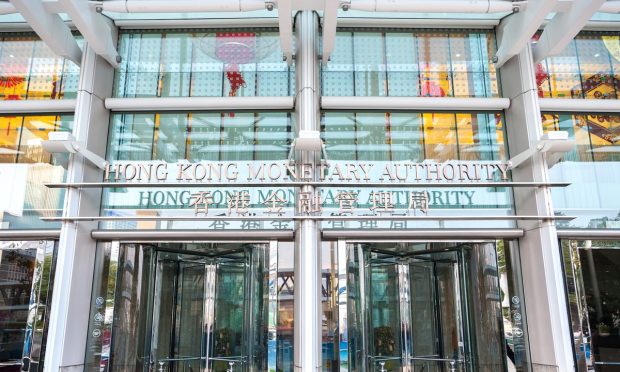Hong Kong Monetary Authority Calls Stablecoins Crypto’s Greatest Threat

Hong Kong’s banking regulator is looking hardest at payments-related stablecoins when it comes to regulating cryptocurrencies.
That was one of the key points in the “Discussion Paper on Crypto-assets and Stablecoins” the Hong Kong Monetary Authority (HKMA) released on Jan. 1.
While aimed in large part at soliciting input from crypto, banking, and other finance industry stakeholders on a broad range of crypto-related regulatory issues, the HKMA did reveal its own thinking, and payment-focused stablecoins are one of the two items at the top of its list.
The other is how authorized institutions (Ais) — banks that accept deposits — provide crypto asset-related services to customers. In that regard, the HKMA to provide “detailed regulatory guidance” soon.
Stablecoins are cryptocurrencies that are largely backed one-to-one by fiat currencies — generally U.S. dollars — or highly liquid investments to maintain an equal peg with that currency. The authority believes that some stablecoins have a high “possibility of becoming a widely accepted means of payments, i.e. ‘payment-related stablecoins,’ thus raising broader monetary and financial implications.”
As a result, the HKMA said, it “sees the need to ensure that payment-related stablecoins are appropriately regulated before they operate in Hong Kong or are marketed to the public of Hong Kong.”
It relegated non-payment-related cryptocurrencies to the back burner, saying its focus will be on consumer protection and anti-money-laundering (AML) issues.
Licensing Stablecoins
One thing the regulator was pretty clear on was that it will require any person or business that wants to be involved in the use stablecoins as a means of payment to be “incorporated in Hong Kong and [hold] a relevant license granted by the HKMA.”
It added that a “mere Hong Kong branch or office of a foreign corporation” will not meet that standard.
Therefore, any “foreign company/group which intends to carry out, as a business, the relevant regulated activities in Hong Kong or actively markets to the public of Hong Kong such activities will need to incorporate a company under Hong Kong law.”
The list of those activities is pretty broad. It includes:
- Issuing, creating (minting) or destroying (burning) stablecoins
- Managing the reserve assets backing a stablecoin’s peg
- Validating transactions and records
- Storing private keys needed to make a payment or transaction with a stablecoin
- Facilitating the redemption of stablecoins
- Transmitting funds using stablecoins
- Executing transactions in stablecoins
Another question the HKMA posed was whether or not to require stablecoin issuers to become licensed AI banks. It punted on this one, while noting that the U.S. President’s Working Group on Financial Markets’ recent stablecoin report said that this should be a requirement.
In this regard, the biggest concern the HKMA has, it said, is the potential of stablecoins to become an alternative to traditional bank deposits. Many international financial bodies and central banks have said that the nature of stablecoins could cause runs that are faster than traditional bank runs.
The issue, the HKMA said, is whether stablecoins should bring higher capital and liquidity requirements than traditional bank deposits.
Stablecoin Risks
The HKMA broke the risks stablecoins pose into seven categories:
1) Financial stability: The potential for stablecoin’s operational systems to be disrupted or fail, and their impact on the financial health and business model of traditional banks.
2) Monetary Stability: This had two parts, the first being countries following El Salvador’s lead in making cryptocurrencies legal tender (which the HKMA thinks is unlikely). More importantly, if a stablecoin uses the Hong Kong dollar as its banking currency it could impact the currency’s supply.
3) Settlement Risks: The potential for blockchain forks to impact (i.e. reverse) settlement finality. This could come via a pre-planned fork or a 51% attack.
See also: The 51% Attack: Crypto’s Double-Spending Achilles Heel
4) User Protection: for one thing, cryptocurrency transactions cannot be reversed, and users might not understand the risks this brings.
5) Illicit Activities: This means anti-money laundering (AML), countering the financing of terror, and other cyber threats like ransomware.
6) International Compliance: meaning maintaining Honk Kong’s position as an international financial center by maintaining and projecting financial stability.
7) Regulatory Arbitrage: Be flexible and don’t fall behind.
The HKMA concluded the report by making an observation very common to regulatory authorities: Crypto-assets don’t currently pose “material risks to financial stability,” but this won’t be true for very much longer. Particularly as the link between cryptocurrencies and the traditional financial system — a link that is often made with stablecoins, is growing.
